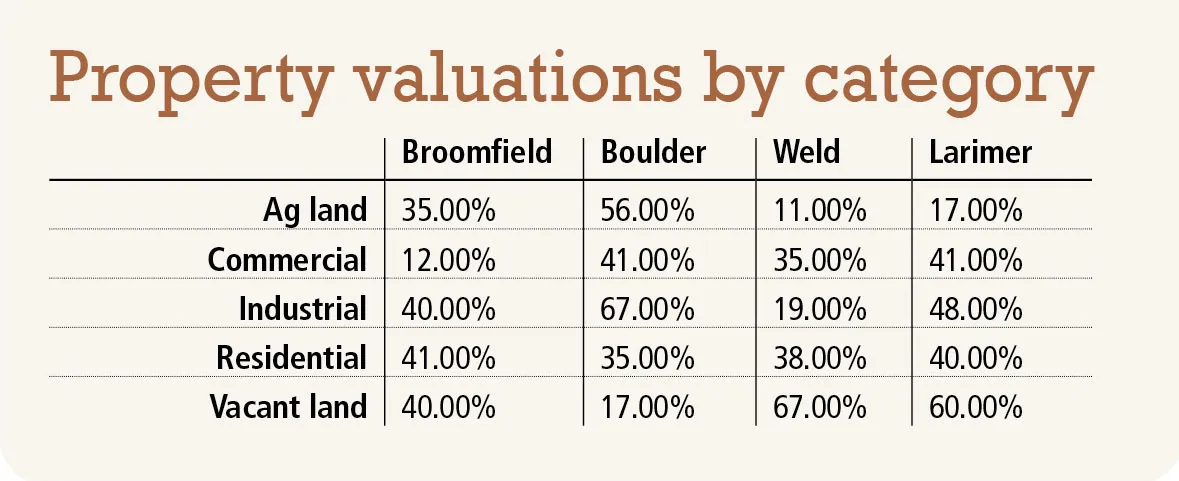Property valuations spike in hot real estate sectors

Property owners may be shocked as they see new appraisals show up in mailboxes this week, but the economic principles of supply and demand should have foretold what to expect.
Hot real estate categories such as industrial/flex properties in the four counties of Northern Colorado and the Boulder Valley spiked the most.
So did vacant land, which developers use to sate the appetite of growth.
SPONSORED CONTENT
County assessors are required to reappraise property in Colorado every two years during odd numbered years. This is the year.
Assessors use sales information between July 1, 2020, and June 30, 2022, which coincided with peak residential values in most markets of the state. They can’t use sales after that June date, such as those this year that in many communities have moderated.
The numbers vary by county, but basically the properties in greatest demand are seeing the largest increases.
Industrial properties increased 67% in valuation in Boulder County where such properties are hard to find. It increased just 19% in Weld, where the effects of the pandemic and downturn of the oil-and-gas segment had impacts. In Larimer, industrial properties were up 48%; in Broomfield, they were up 40%.
Bob Overbeck, assessor in Larimer County, concurred that high demand has equated to much higher valuations.
Residential was more uniform, with increases in the region ranging from 35% in Boulder County to 41% in Broomfield.
The commercial sector, which includes offices and retail properties, ranged from 12% up in Broomfield to 41% in both Boulder and Larimer counties. Sales of retail properties, commercial Realtors say, and small offices have held up fairly well in areas outside of the metropolitan area. Denver, on the other hand, saw just a 17% increase in that category.
Vacant-land valuations were up 67% in Weld County, which is forecast to exceed 610,000 in population by 2050. They were up 60% in Larimer, which together with Weld accounted for most of the state’s net population growth since the last census.
Valuations don’t directly translate into increases in property taxes, although the sheer magnitude of the increases will result in bigger tax bills. Some taxing bodies such as school districts employ fixed mill rates. Others float mill rates based upon budgetary limits. The Legislature has made some adjustments to assessment rates and market values for some property types; those will be applied before tax bills are sent but are not included on notices of valuation, according to the Boulder County Assessor’s Office.
Property owners can appeal their valuations. Information about appeal procedures can be found on county assessor websites.
Property owners may be shocked as they see new appraisals show up in mailboxes this week, but the economic principles of supply and demand should have foretold what to expect.
Hot real estate categories such as industrial/flex properties in the four counties of Northern Colorado and the Boulder Valley spiked the most.
So did vacant land, which developers use to sate the appetite of growth.
County assessors are required to reappraise property in Colorado every two years during odd numbered years. This is the year.
Assessors use sales information between July 1, 2020, and June 30, 2022, which coincided with peak residential values in…



